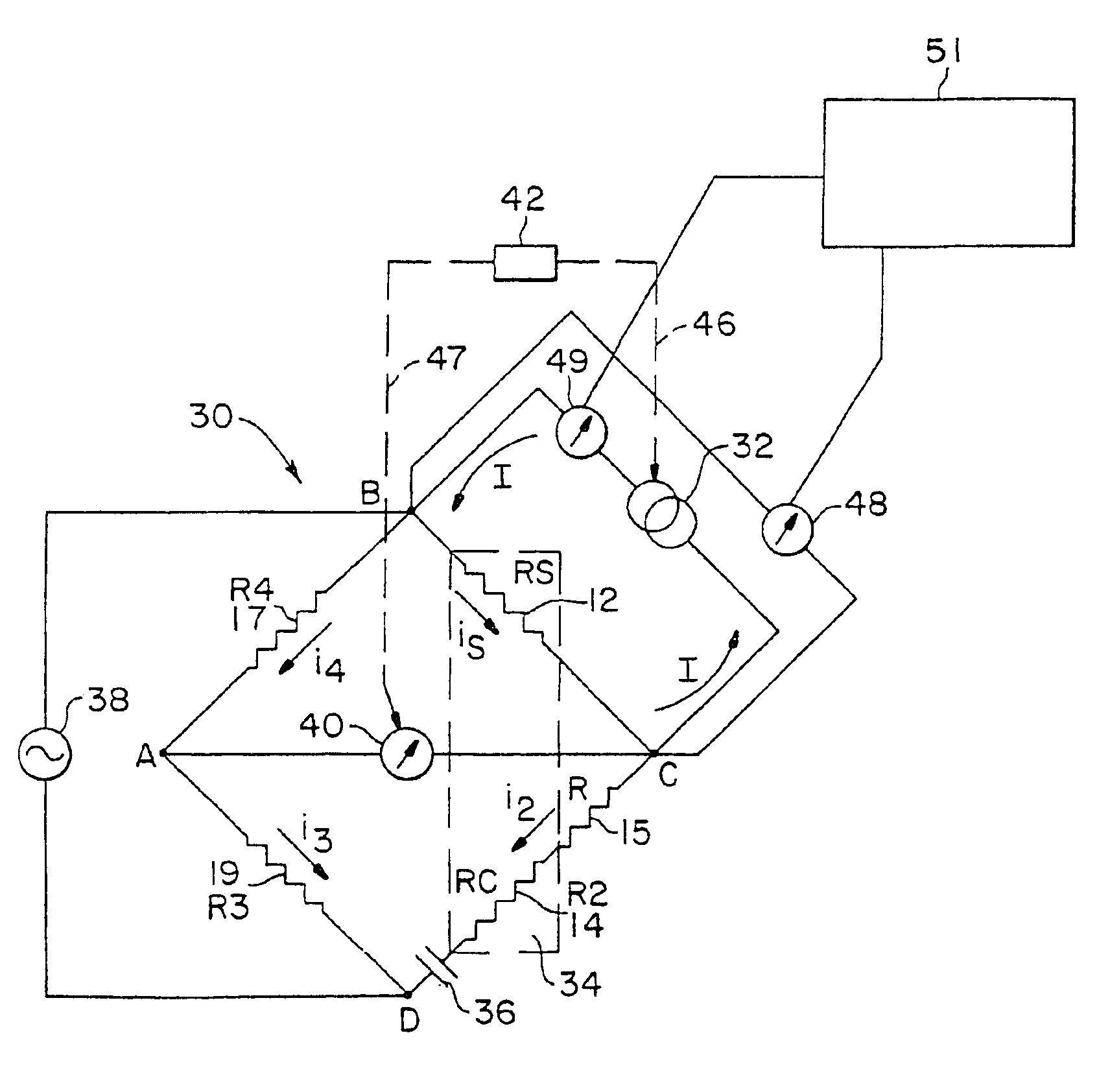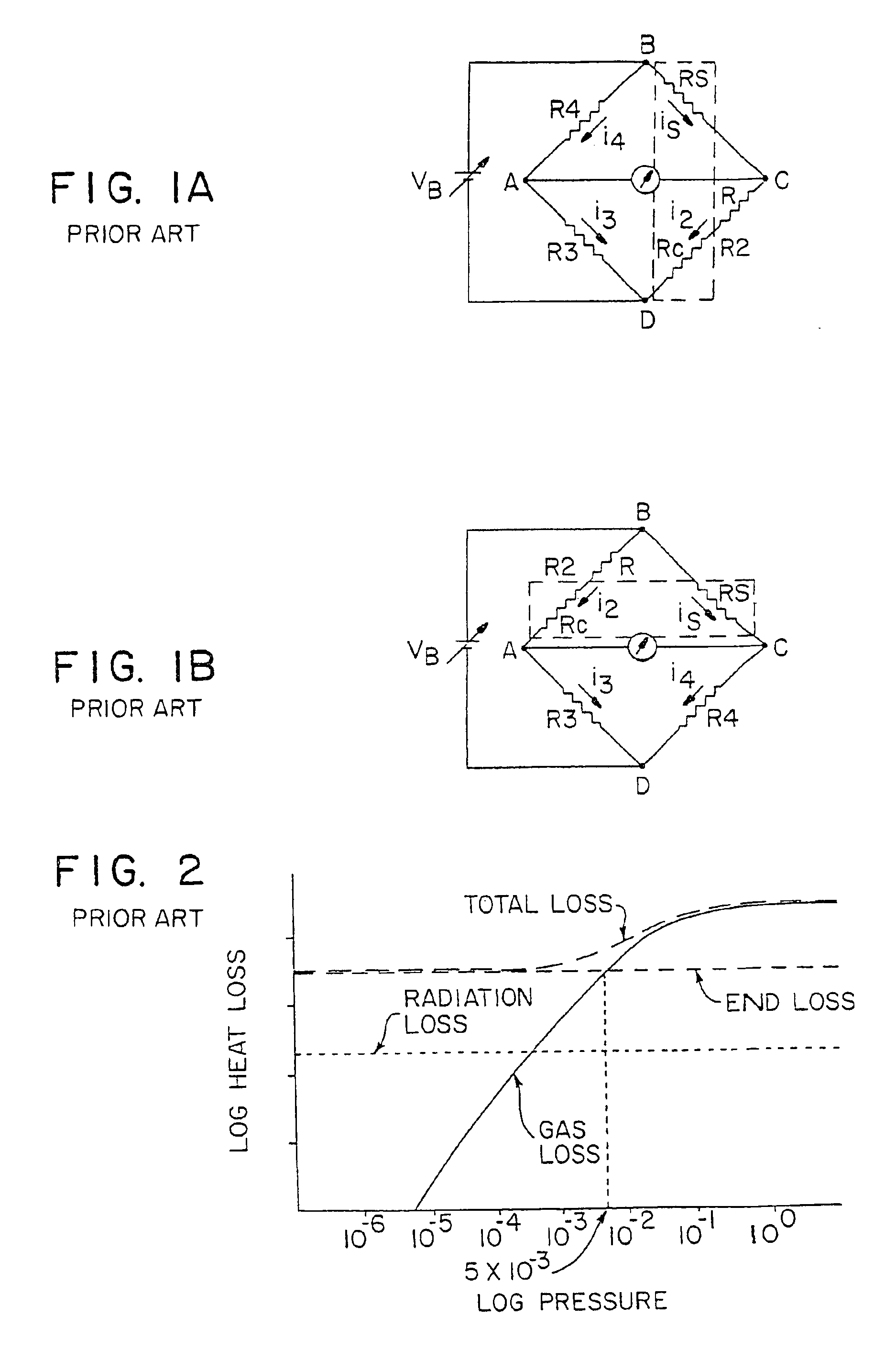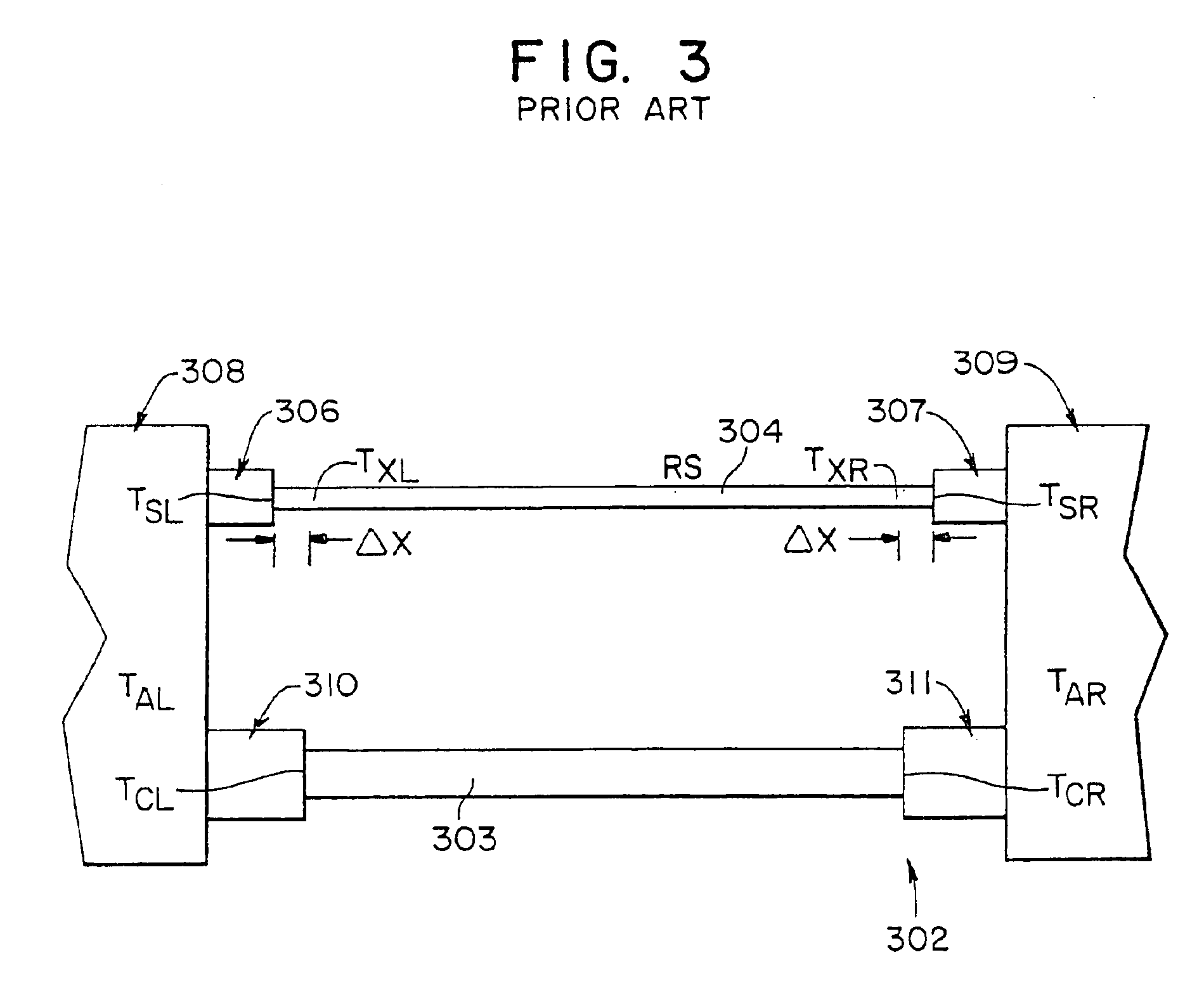Apparatus and methods for heat loss pressure measurement
a technology of apparatus and pressure measurement, applied in the direction of instruments, specific gravity measurement, mechanical means, etc., can solve the problems of inability to accurately measure pressure, high design complexity, and electrical imbalance of bridges, and achieve the effect of improving the range of accurate pressure measurement and improving the accuracy of low, mid-range and high pressure measuremen
- Summary
- Abstract
- Description
- Claims
- Application Information
AI Technical Summary
Benefits of technology
Problems solved by technology
Method used
Image
Examples
Embodiment Construction
[0070]A description of preferred embodiments of the invention follows. The invention is first described in terms of four categories of improvements to conventional Pirani gauge designs. In a particularly preferred embodiment, the four improvements are used together, and combine synergistically to provide a Pirani gauge having substantially improved performance characteristics. Additional embodiments of the present invention are then described thereafter.
Improvement 1
[0071]The first category of improvements will be discussed with reference to FIGS. 4a and 4b. FIG. 4a is a side view of a portion 10 of an improved heat loss gauge (not to scale). FIG. 4b is a sectional view of portion 10 taken along line 4b—4b in FIG. 4a. As shown in FIGS. 4a and 4b, a small diameter wire sensing element 12 is located in the same plane and spaced a distance d from a small diameter wire compensating element 14. Spacing d between sensing element 12 and compensating element 14 is preferably approximately 0...
PUM
| Property | Measurement | Unit |
|---|---|---|
| pressure | aaaaa | aaaaa |
| pressures | aaaaa | aaaaa |
| pressures | aaaaa | aaaaa |
Abstract
Description
Claims
Application Information
 Login to View More
Login to View More - R&D
- Intellectual Property
- Life Sciences
- Materials
- Tech Scout
- Unparalleled Data Quality
- Higher Quality Content
- 60% Fewer Hallucinations
Browse by: Latest US Patents, China's latest patents, Technical Efficacy Thesaurus, Application Domain, Technology Topic, Popular Technical Reports.
© 2025 PatSnap. All rights reserved.Legal|Privacy policy|Modern Slavery Act Transparency Statement|Sitemap|About US| Contact US: help@patsnap.com



